Patagonia, by all accounts, is preeminent trout country. The southern thirds of both Chile and Argentina boast some of the world’s top trophy trout rivers. From the Malleo to the Limay, and from the Paloma to the Rio Grande, this wild region along the spine of the southern Andes offers perhaps the largest variety of trophy trout rivers in the world.
But what about the region’s lake fishing? Certainly, we’ve all heard of Strobel Lake in Argentina, even if only by its kitschy nickname — Jurassic. But, beyond that incredible trophy trout fish factory, is lake fishing really a thing at the southern end of South America? Absolutely. In fact, die-hard stillwater trout anglers who might have passed Patagonia by, assuming it was just a region of trout rivers, should put a pin in the map right around Coyhaique in southern Chile, and another across the border in Argentina at San Martin de los Andes.
So many options
On both sides of the Andes, passionate lake anglers have lots of choices when it comes to stillwater fishing. Even anglers visiting the region's renowned lodges and estancias with the intent of fly fishing its heralded rivers are often diverted by the opportunity to chase really big trout in lakes that most have never heard of.
And, generally speaking, lake fishing in Patagonia isn't an uber-technical pursuit relegated to boat-bound anglers armed with depth finders and sonar. Truth be told, the lakes are generally too big to consider using a float tube or even a kayak—the latter might be doable, but Patagonian wind storms can whip up out of nowhere at any given time, churning up a gale and turning a once-placid lake into a frothy morasse of whitecaps and random waves.
Instead, like most fly fishing in Chile and Argentina, the pursuit involves a good amount of spot-and-stalk work, even if the stalking is done from a drift boat or a cataraft captained by an able fly fishing guide. Certainly, anglers could employ traditional blind casting methods to simply cover water. But let's be honest. Traveling half a word away to spend days on end blind casting to trout is probably not a marketable proposition.
But a carefully guided cataraft pushed along the edges in search of cruising and eating trout is a different proposition altogether. That the lake-bound fish are often bigger than their cousins in the nearby rivers just adds to the appeal.
Even better? Some Patagonian lakes, like Lago Brown, for instance, sport vast sand and gravel flats — chasing big-shouldered trout on the flats isn't unlike hunting for bonefish in the tropics. The water even looks similar to the Caribbean flats – emerald green depths give way to crystal clear water just a foot or so deep that, should they choose, anglers could easily wade.

Still others, like Lago Elizalde, also in Chile, boast excellent structure ranging from steep cliff faces, drowned timber and even weed beds that attract impressive aquatic insects life and, by extension, cruising trout.
On the Argentine side of the border, anglers can follow just about any renowned trout river to its headwaters and come across a lake that's likely worth fishing. For instance, the storied Rio Malleo starts at Lago Tromen in Lanin Volcano National Park, and is an excellent stillwater fishery for big brown and rainbow trout, as well as brook trout.
A bit to the south, where Argentina’s estancia country has spawned a trout-fishing subculture, Lago Filo Hua Hum is a stellar trout fishery that births its namesake river — one of the most technical trout rivers in Patagonia.
Trout of all flavors
Patagonian lakes, too, offer a variety of species for anglers to choose from. On Lago Yelcho, anglers can fish for trophy browns and rainbows during the famous dragonfly hatch, and later in the year, the lake actually gets a run of Atlantic salmon—escapees from a pervasive near-shore fish farming industry.
These fish run up the Rio Yelcho, a beautiful rainforest river that drains the world-renowned Futaleafu basin that includes both the Futaleafu and Palena rivers. Farther south, near Coyhaique, anglers have affectionately renamed Lago Cordero to “Zero to Hero” Lake in honor of the massive brown trout that prowl its prolific weed beds.
On the Argentine side, a massive reservoir, Embalse Alicura, backs up the Collon Cura and Limay rivers, and is home to massive browns and rainbows. In the fall of the year, the reservoir produces one of the best “events” in Patagonia fly fishing — its famous “minnow run.”
Starting in the lake in March, the migration of small bait fish runs up the Collon Cura, and this is when lake anglers have the best of both worlds. From boats, it's doable to follow the run up into the river, and then it's time to switch gears and start swinging streamers in the current for seriously fat lake-dwelling rainbows that follow the baitfish up the river.
In addition to turning up in Lago Tromen, brook trout, which aren't as prolific as browns and rainbows, thrive in Lago General Vintter, and make a famous downstream run into Argentina's Rio Corcovado. But lake anglers can chase these introduced char all season long as they prowl the shores of the lake.

Get your lake on
Patagonia is a magical place –— trout anglers could reasonably call it the fishiest place on earth.
But, if and when you decide to visit, don't approach a trip to the southern Andes with blinders on. Yes, the region's rivers are the stuff of legends. If you have the opportunity to fish the Rio Blanco or the Traful, you shouldn't bat an eye. But, should a guide or an outfitter suggest a day on a lake, open your mind.
You'll very likely find yourself on a sight-fishing adventure that will test your cast and reward you with plus-sized trout that might even be a bit bigger than the behemoths you might have been lucky enough to tangle with the day before on the river.
Yes, Patagonia is a land of rivers. But remember this: almost every great Patagonia river starts in a lake.




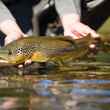
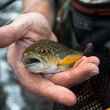
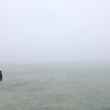
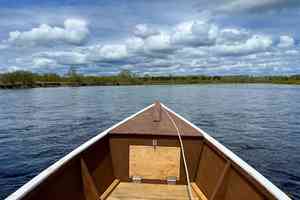


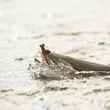
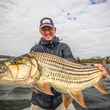
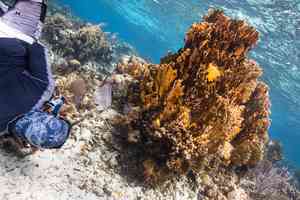


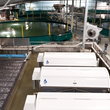
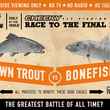



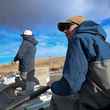
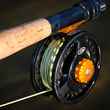



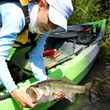
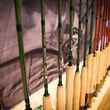
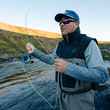
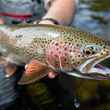
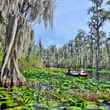
Comments